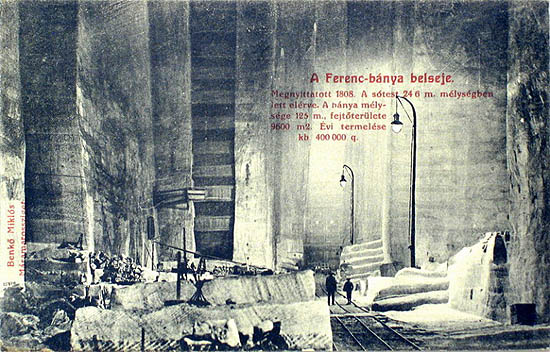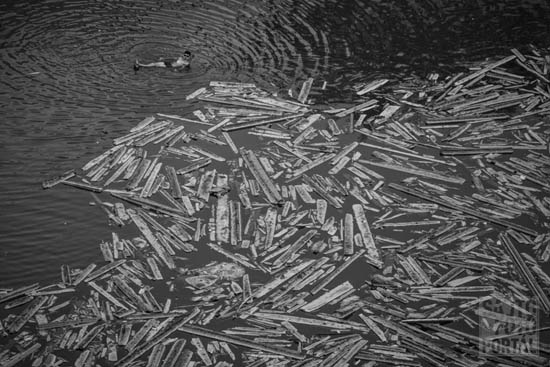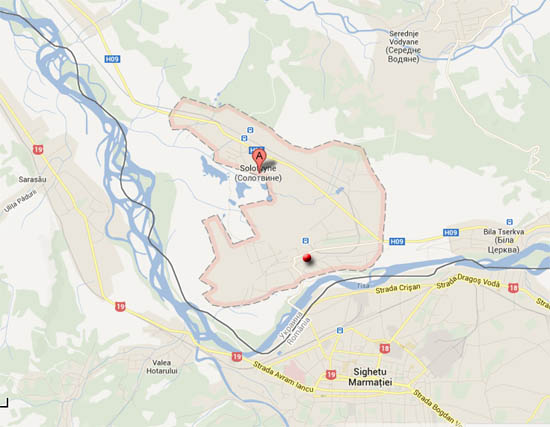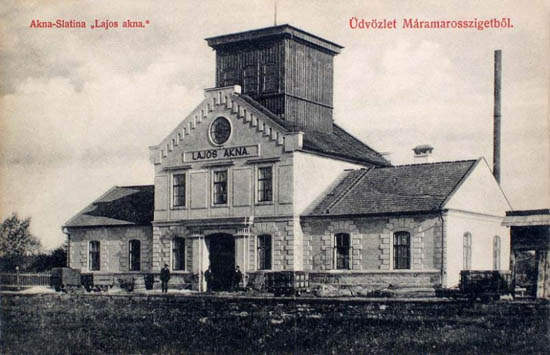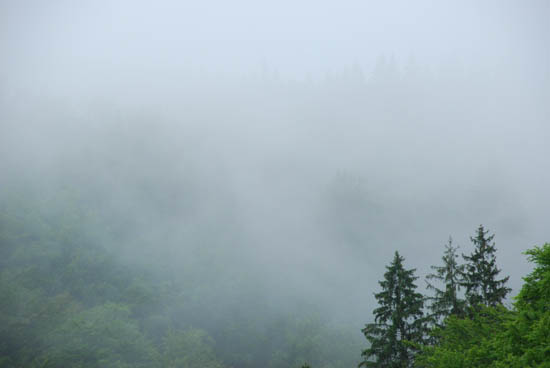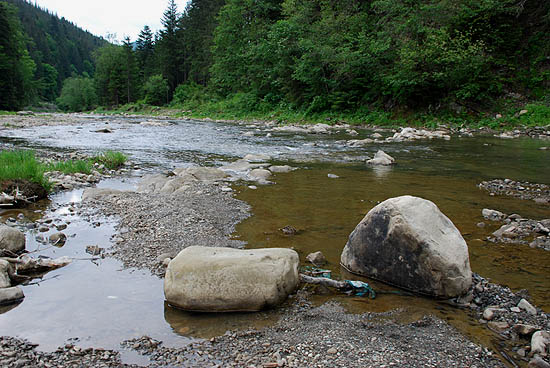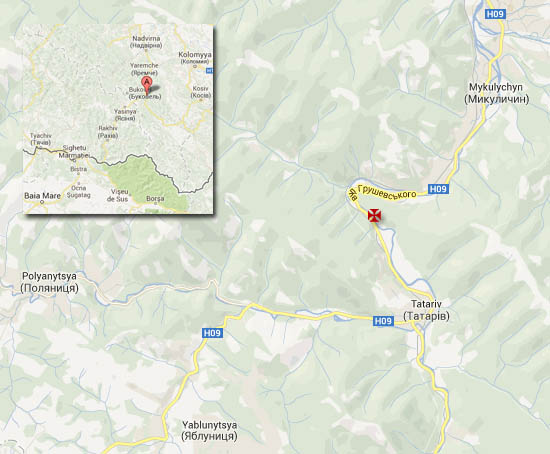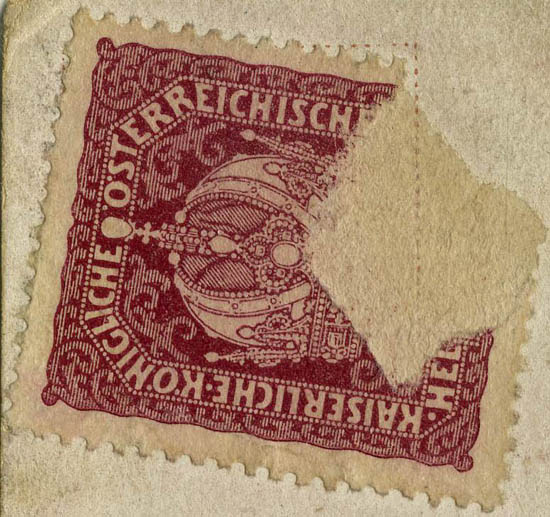

Rather than in Vienna and Budapest, the old Monarchy can be found in Lemberg and Czernowitz, where since the collapse of the empire most of the houses have preserveed their condition of a hundred years ago, frozen into a Sleeping Beauty sleep, and where nowadays, when they renew some of them, with a lucky hand they try to restore the feeling of the Monarchy again. And of course in Odessa, on
the flea market of the port city, where the waves sometimes still wash ashore the remains of the shipwrecked empire. Like these few postcards from
last week’s loot.
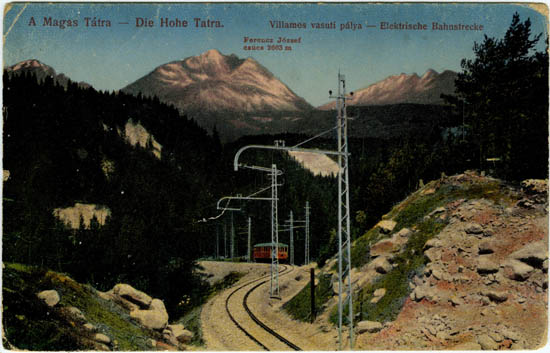
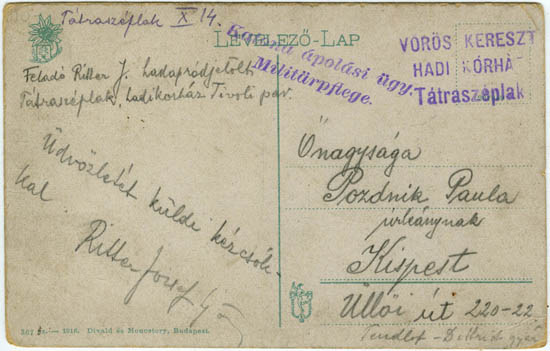 Őnagysága Pozdnik Paula úrleánynak, Kispest, Üllői út 220-22, Teudloff-Dietrich gyár.
Őnagysága Pozdnik Paula úrleánynak, Kispest, Üllői út 220-22, Teudloff-Dietrich gyár.
Tátraszéplak, 1916 (?) X. 14. Feladó Ritter J. hadapródjelölt. Tátraszéplak,
hadikórház, Tivoli pavilon. Üdvözletét küldi kézcsókkal Ritter József.
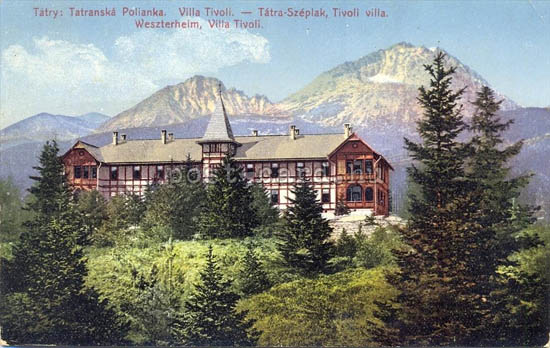 The Hotel Palace Tivoli, where Cadet József Ritter was recuperating (Not my postcard)
The Hotel Palace Tivoli, where Cadet József Ritter was recuperating (Not my postcard)
In the peacetime idyll of the postcard sent from the resort hotel Palace Tivoli in
Tátraszéplak under the Tatry mountains, the recently opened
electric railway is slowly jogging towards
Csorba Lake / Štrbské Pleso. The
Gerlach Peak, the highest point of the former Hungary still bears the name of Franz Joseph, and in fact Franz Joseph is still alive. But the war had been going on for two years, this is why Cadet József Ritter sends his postcard from the military hospital established in the resort hotel to Mademoiselle Paula Pozdnik to the town of Kispest, in the
Teudloff-Dittrich iron foundry and fire engine factory. The time seems impossibly far when Tátraszéplak would get the name of Tatranska Polianka, the peak that of the Czech Legionaries and later of Stalin, the iron foundry that of the Hungarian State Railway Engine and Machine Factory, and Kispest would merge into Budapest.
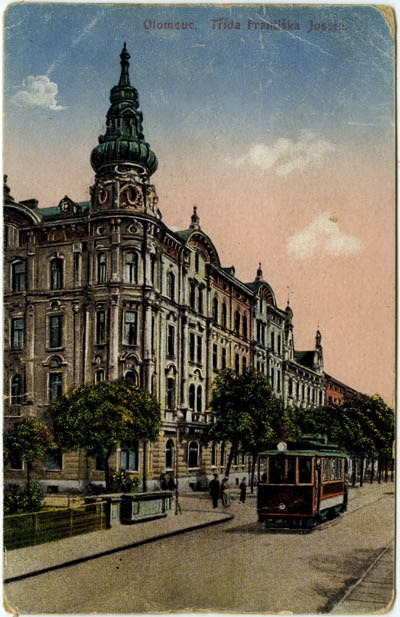
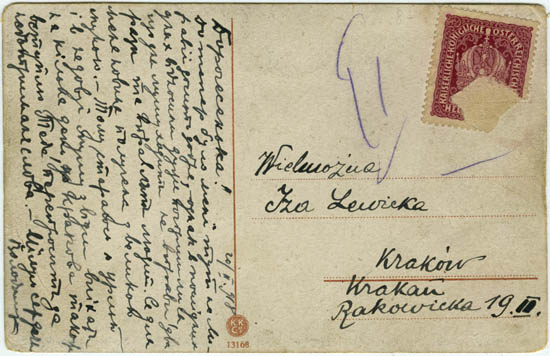
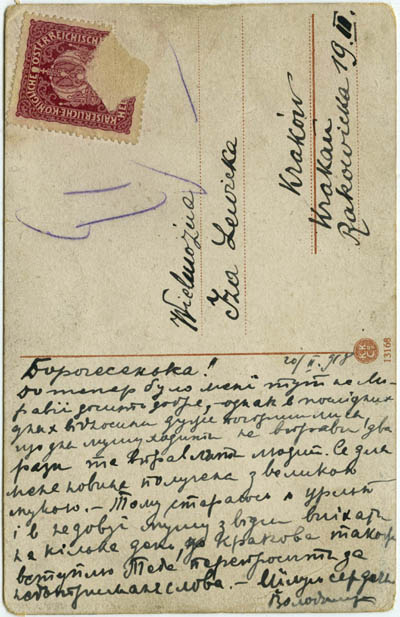 Wielmożna Iza Lewicka. Kraków/Krakau, Rakowicka 19. II. 1918. II. 20.
Wielmożna Iza Lewicka. Kraków/Krakau, Rakowicka 19. II. 1918. II. 20.
Who could transcribe the Ukrainian-language message?

The postcard representing the Franz Joseph Square in Olmütz/Olomouc was sent by Volodimir to the Polish Krakow, but he makes excuses in Ukrainian for having to spend a few more days than planned in Moravia: this constellation in itself is a faithful impression of the Monarchy. However, the real protagonist of the card is the tramway, for the sake of which the whole composition was pushed slightly to the left. The tram
started in Olmütz on April 1, 1899, and the local Czech press treated in detail and with pleasure the dangers of the “German” vehicle: “Beware of the tram! It destroys wagons and kills people!”
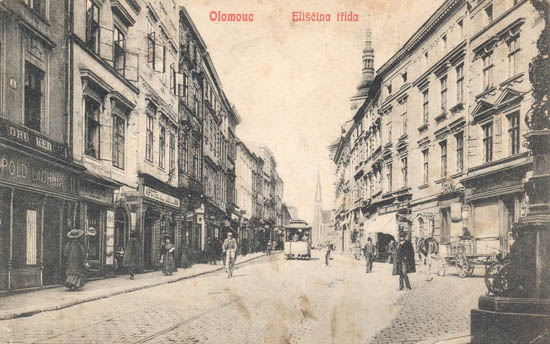 The same tram from the other side, the Elisabeth Square (Not my postcard)
The same tram from the other side, the Elisabeth Square (Not my postcard)
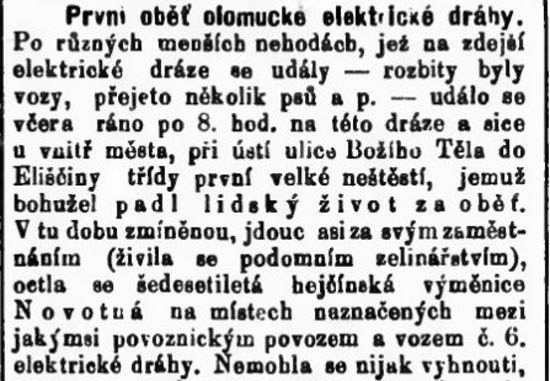 “The first victim of the Olmütz electric railway!”
“The first victim of the Olmütz electric railway!”
The atmosphere turned only when the name of Franz Joseph Square changed for Masaryk, and the exclusively German inscriptions of the tram were changed for exclusively Czech. By then the Ukrainian-Polish couple probably also lived in Eastern Poland, which shortly afterwards, with the
shift of the borders to the west, became Ukraine: maybe this is how the postcard then found its way to Odessa.
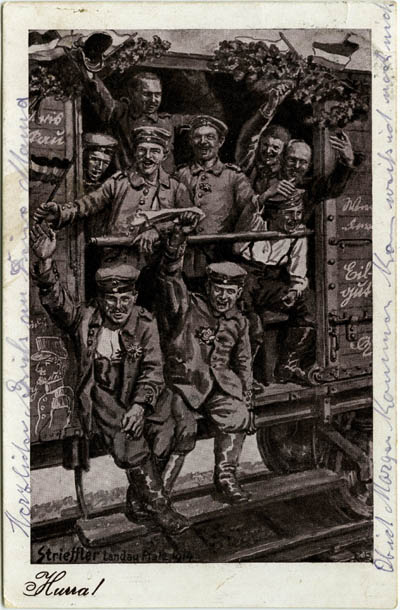
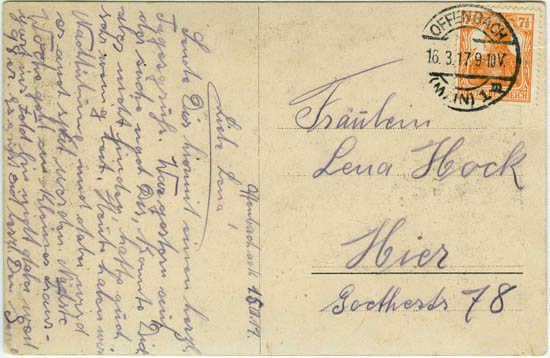
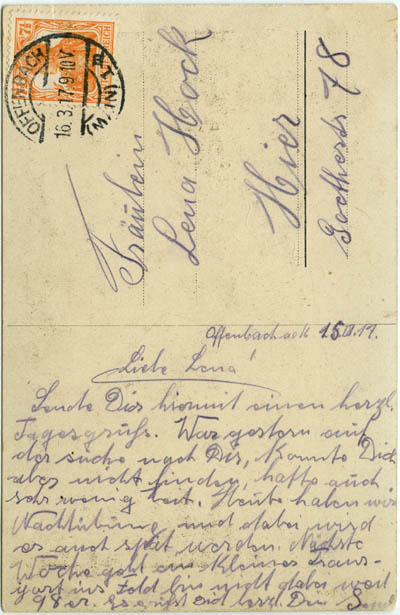 “Hurra!” Fräulein Lena Hock, Hier [Offenbach], Goethestr. 78. 1917. III. 15.
“Hurra!” Fräulein Lena Hock, Hier [Offenbach], Goethestr. 78. 1917. III. 15.
Liebe Lena! Sende Dir hiermit einen herzlichen Tagesgrüß. War gestern auf der Suche nach Dir, konnte Dich aber nicht finden, hatte auch sehr wenig Zeit. Heute haben wir Nachtübung und dabei wird es auch spät werden. Nächste Woche geht ein kleines Transport ins Feld bin nicht dabei weil 98er. Grüßst Dich herzlich Dein Seppl [?] – Herzlichen Grüß an Deine Mama. Ob ich Morgen kommen kann weiß ich noch nicht.
Not a postcard of the Monarchy, but it just could be: the
genre of “before the leaves fall, our soldiers will be back home” was characteristic of all Europe at the outbreak of the war. We also want to publish a nice collection of them with Natasha Gaidarova from the
Great War blog. It is strange that the postcard was popular even three years later, although it is true that Seppl from Offenbach was just about to leave for the great journey.
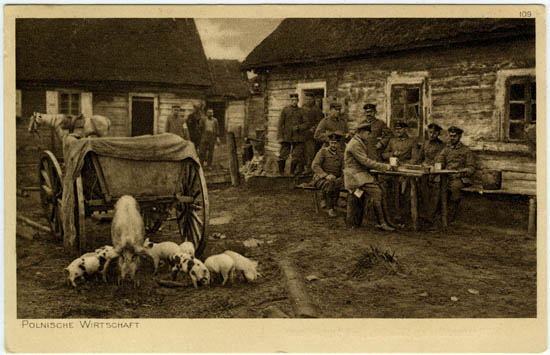
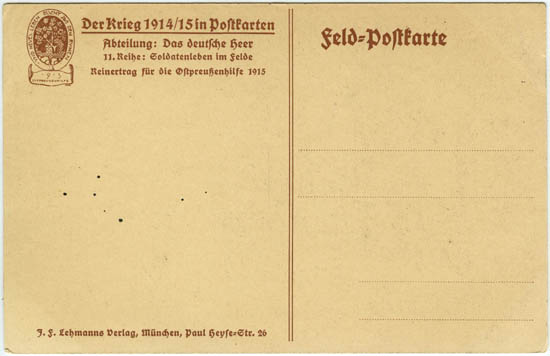 “Polnische Wirtschaft”. Der Krieg 1914/15 in Postkarten. Abteilung: Das deutsche Heer. 11. Serie: Soldatenleben im Felde. Reinertrag für die Ostpreußenhilfe 1915
“Polnische Wirtschaft”. Der Krieg 1914/15 in Postkarten. Abteilung: Das deutsche Heer. 11. Serie: Soldatenleben im Felde. Reinertrag für die Ostpreußenhilfe 1915
And here he already arrived. Although, according to its title, this item of the postcard series by Lehmann Publisher in Munich represents a “Polish farm”, the fruits of this farm are already enjoyed by the German soldiers, most probably after the
Gorlice Breakthrough in the spring of 1915, somewhere in Galicia.

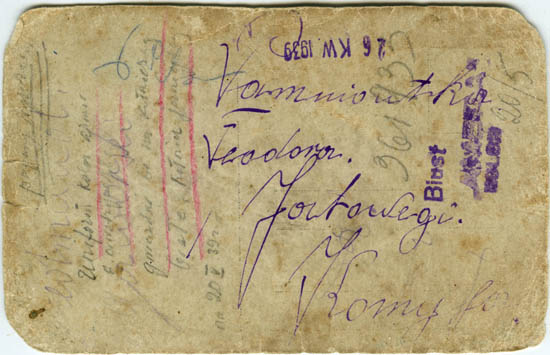 „Uniform austryjacki szary. Kołnierz […] na nim gwiazdki białe” (Reading by Tamás Deák)
„Uniform austryjacki szary. Kołnierz […] na nim gwiazdki białe” (Reading by Tamás Deák)
We kindly ask our Polish readers to help us in reading the rest of the texts.
And here are the former owners of the farm, enlisted in the Monarchy’s army. The owner perhaps wrote in remembrance on the picture which clothes he was wearing at that time: “Austrian field-gray uniform. Tube ring collar […] and white stars on it.” The reminder was truly necessary, because the uniform would change soon.
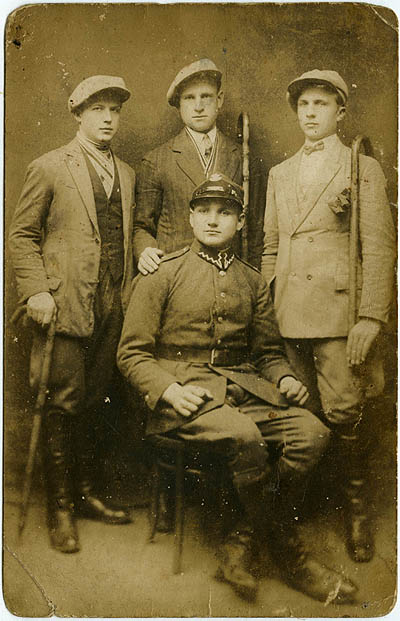
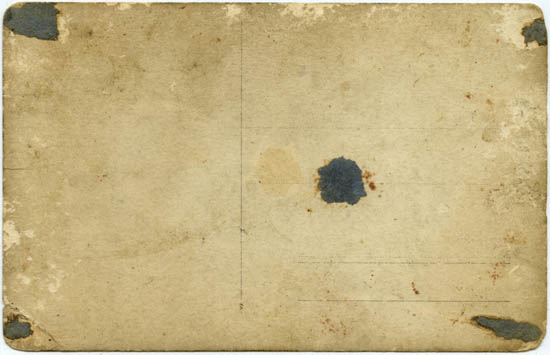
The celebrated protagonist of the photo already wears the uniform of the newly formed independent Polish army. His three standing companions compensate with a grim posture for the lack of uniform, and demonstrate that when the home will call them, they will stand up. Soon it will be necessary.
I gladly hand over the photos and postcards bought on the Odessa flea market for just the purchase price + postage costs to anyone who would really appreciate them. Numbers 003 and 009 already have their masters.
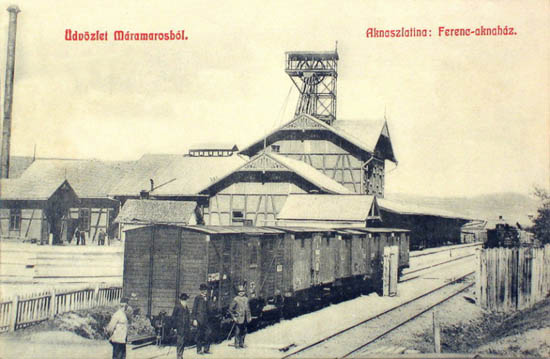 Aknaszlatina/Солотвино, Ferenc Mine, 1908
Aknaszlatina/Солотвино, Ferenc Mine, 1908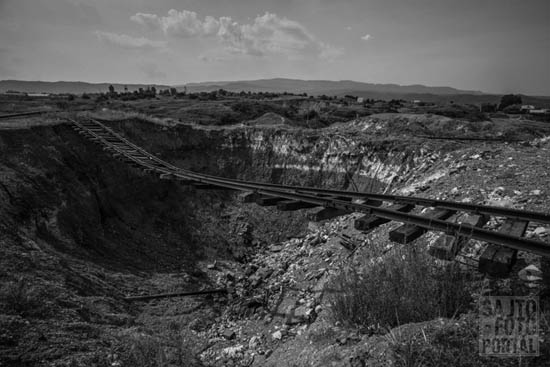 Aknaszlatina/Солотвино, Ferenc Mine, 2012. Photos by Márton Kállai
Aknaszlatina/Солотвино, Ferenc Mine, 2012. Photos by Márton Kállai “Aknaszlatina or Solotvyno, the once thriving Subcarpathian salt mine is constantly evolving. On the surface, under the former mining colonies the ground has broken, craters are being formed by the water washing away the mines, while the Dead Sea-like experience of the saturated salt solution breaking to the surface lures more and more tourists to soak themselves. The mining is over, and the local Hungarians, once the majority of the miners, have increasingly been shut out from the Ukrainian world of new entertainment. A new world is being formed on the ruins of nature, while the old one lives on along with it in the memories.”
“Aknaszlatina or Solotvyno, the once thriving Subcarpathian salt mine is constantly evolving. On the surface, under the former mining colonies the ground has broken, craters are being formed by the water washing away the mines, while the Dead Sea-like experience of the saturated salt solution breaking to the surface lures more and more tourists to soak themselves. The mining is over, and the local Hungarians, once the majority of the miners, have increasingly been shut out from the Ukrainian world of new entertainment. A new world is being formed on the ruins of nature, while the old one lives on along with it in the memories.”
